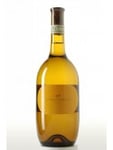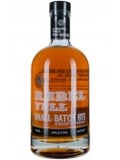 Understanding wine tasting terms, as well as using them, will go far in your next wine tasting adventure. Having the right words or wine tasting vocabulary can help also boost your wine buying confidence. So, how well do you know wine terminology? There are literally hundreds of ways to describe wine. It doesn't have to remain a mystery. Don't know it? Let's decode it. We've made it easy for you by putting together a short list of 13 must-know wine terms you should know today.
Understanding wine tasting terms, as well as using them, will go far in your next wine tasting adventure. Having the right words or wine tasting vocabulary can help also boost your wine buying confidence. So, how well do you know wine terminology? There are literally hundreds of ways to describe wine. It doesn't have to remain a mystery. Don't know it? Let's decode it. We've made it easy for you by putting together a short list of 13 must-know wine terms you should know today.
Wine Tasting Vocabulary
Aroma: This is a generally positive descriptor for the smell of a wine (e.g, fruity, spicy, earthy, etc.).
Astringent: Typical of high tannin wines, this means the wine leaves a puckery, drying sensation in the mouth. Typical of young
Cabernets,
Zinfandels, and other reds.
Balanced: Refers to the harmonious balance of a wine’s components (sweetness, acidity, tannin, alcohol, oak, etc.).
Body: This describes the density or viscosity of a wine. The body of a wine can be thin, light, medium, or full. You can check the body of a wine by swirling your glass and watching how the wine clings to the glass – 14% full body, 12% medium, and 10% light.
Bouquet: This is similar to an aroma, but not quite the same. The bouquet refers to the complex scent that a wine develops over time during the aging process.
Complex: This term is used to describe a wine that is multidimensional in terms of aroma, flavor, etc.
Crisp: This trait is typical of wines with high acidity. A crisp wine will leave a lively sensation on the palate, similar to tartness.
Floral: This describes a wine that has an aroma of flowers. This aroma can be found in white wines like
Riesling and
Gewürztraminer (carnation, orange blossom, jasmine, grapefruits, rose petals, etc.) and in reds like
Pinot Noir (roses, violets, etc.).
Fruity: This characteristic means the wine has a sweetness, richness, or body coming from ripe grapes. Specific fruits are often used in the description.
Nose: This is the total of all the aromas and odors that can be smelled.
Oaky: This refers to the aroma that is derived from oak barrel aging – it is usually described as “vanilla-like.”
Spicy: This refers to the aroma of common spices found in wine – cinnamon, cloves, anise, and black pepper are all common spices.
If this list left you wanting more, we suggest you give this
Guide to Wine Tasting Terms a read. And if you're eager to expand your wine termonolgy even more —look no further than the FREE
Haskell's Essential Guide To Wine. This fifteen-
page guide is filled with easy-access information on everything from choosing the correct wine glass to wine tasting terms. Stop by to any of our upcoming wine tasting events and swirl around some of your new favorite wine terms.

 Understanding wine tasting terms, as well as using them, will go far in your next wine tasting adventure. Having the right words or wine tasting vocabulary can help also boost your wine buying confidence. So, how well do you know wine terminology? There are literally hundreds of ways to describe wine. It doesn't have to remain a mystery. Don't know it? Let's decode it. We've made it easy for you by putting together a short list of 13 must-know wine terms you should know today.
Understanding wine tasting terms, as well as using them, will go far in your next wine tasting adventure. Having the right words or wine tasting vocabulary can help also boost your wine buying confidence. So, how well do you know wine terminology? There are literally hundreds of ways to describe wine. It doesn't have to remain a mystery. Don't know it? Let's decode it. We've made it easy for you by putting together a short list of 13 must-know wine terms you should know today.


